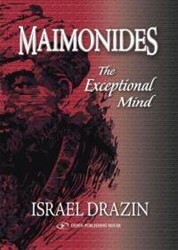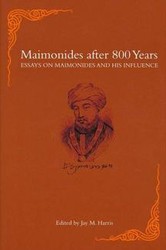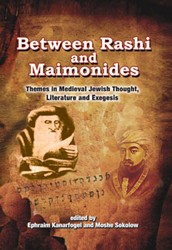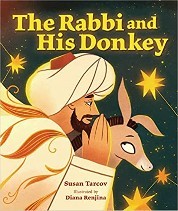Micah Goodman has taken up the challenge of rendering this classic of Jewish philosophy more accessible, but it will never be totally accessible. By design, Maimonides left his guide filled with leaps and contradictions and cloaked revelations, daring his readers to make connections, resolve or at least meditate on the contradictions, and expose what means and beliefs has been disguised.
Goodman’s way is to regroup the guide’s scattered arguments and propositions and proofs into a kind of coherence that will release more of its power and bring out the relationships between the Rambam’s main concerns and 21st century life.
Also, by injecting copious references to the Rambam’s other major work, Mishneh Torah, Goodman widens our understandings of the great thinker’s intentions, range, wisdom, and boundless curiosity.
Those familiar with the tenants and methods of Jacque Derrida’s deconstruction movement in twentieth century literary criticism will find some affinities between it and Goodman’s achievement — and the achievement of Maimonides as well.
Maimonides abhorred the infantilism of literal readings of the biblical text that maintained anthropomorphic understandings of God. Bringing the unknowable and unfathomable perfection down to human scale robs the human seeker of true glimpses of the divine.
Maimonides also, as Goodman clearly and powerfully points out, encouraged seekers to cast off inherited notions and habits of mind. He also insisted on the inability of language to capture the true nature of God. Moreover, he argued that the perplexity that could lead people to despair was an inevitable condition: one must learn to live with and through it rather than to overcome it.
The pattern that Goodman achieves by deconstructing and reconstructing the guide creates a text in three parts: God, Torah, and Perplexity. A total of eighteen chapters (plus a conclusion) fill the three parts in an extremely serviceable progression, linking insight to insight and alternating doubts and proofs.
The building blocks in the section on God are inquiries into the concepts of prophecy, providence, and redemption. The section on Torah takes up the issue of the scripture’s divinity, the purpose of mitzvot, and how human beings may interact with Torah on the path to their never-to-be-realized perfection. The discussion of perplexity explores the role of doubt, the dangers of dogmatism, tradition, and even reason.
Goodman’s book, a guide to The Guide, is an astonishing achievement. There can be no Maimonides for Dummies, and thus Goodman’s presentation will challenge his readers mightily. It is a challenge very much worth taking.
Acknowledgments, index, introduction, notes.
Related Content:
- Maimonides Reading List
- David Zulberg: Rambam and Medicine
- From Defender to Critic: The Search for a New Jewish Self by David Hartman
Philip K. Jason is professor emeritus of English at the United States Naval Academy. A former editor of Poet Lore, he is the author or editor of twenty books, including Acts and Shadows: The Vietnam War in American Literary Culture and Don’t Wave Goodbye: The Children’s Flight from Nazi Persecution to American Freedom.





